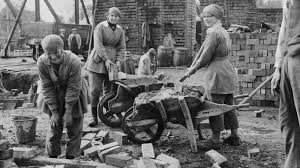The History of the Suffragettes
- Pili Pala

- Feb 25, 2020
- 4 min read
Updated: Jun 23, 2020

The Suffragettes wanted the right for women to vote.
The move for women to have the vote had really started in 1897 when Millicent Fawcett founded the National Union of Women’s Suffrage. “Suffrage” means the right to vote and that is what women wanted.

Millicent Fawcett believed in peaceful protest. She felt that any violence or trouble would persuade men that women could not be trusted to have the right to vote. Her game plan was patience and logical arguments. Fawcett argued that women could hold responsible posts in society such as sitting on school boards – but could not be trusted to vote; she argued that if parliament made laws and if women had to obey those laws, then women should be part of the process of making those laws; she argued that as women had to pay taxes as men, they should have the same rights as men and one of her most powerful arguments was those wealthy mistresses of large manors and estates employed gardeners, workmen and laborers, who could vote, but the women could not regardless of their wealth.

However, Fawcett’s progress was very slow. She converted some of the members of the Labour Representation Committee (soon to be the Labour Party) but most men in Parliament believed that women simply would not understand how Parliament worked and therefore should not take part in the electoral process. This left many women angry and in 1903 the Women’s Social and Political Union was founded by Emmeline Pankhurst and her daughters Christabel and Sylvia. They wanted women to have the right to vote and they were not prepared to wait. The Union became better known as the Suffragettes.

The Suffragettes refused to bow to violence. They burned down churches because the Church of England was against what they wanted; they vandalised Oxford Street, apparently breaking all the windows in this famous street; they chained themselves to Buckingham Palace as the Royal Family were seen to be against women having the right to vote; they hired out boats, sailed up the Thames and shouted abuse through loud hailers at Parliament as it sat; others refused to pay their tax. Politicians were attacked as they went to work. Their homes
were firebombed. Golf courses were vandalised. The first decade of Britain in the twentieth century was proving to be violent in the extreme.
Suffragettes were quite happy to go to prison. Here they refused to eat and went on a hunger strike. The government was very concerned that they might die in prison thus giving the movement martyrs. Prison governors were ordered to force-feed Suffragettes but this caused a public outcry as forced feeding was traditionally used to feed lunatics as opposed to what were mostly educated women.
The government of Asquith responded with the Cat and Mouse Act. When a Suffragette was sent to prison, it was assumed that she would go on a hunger strike as this caused the authorities maximum discomfort. The Cat and Mouse Act allowed the Suffragettes to go on a hunger strike and let them get weaker and weaker, but force-feeding was not used. When the Suffragettes were very weak they were released from prison. If they died out of prison, this was of no embarrassment to the government.
However, they did not die but those who were released were so weak that they could take no part in violent Suffragette struggles. When those who had been arrested and released had regained their strength, they were re-arrested for the most trivial of reason and the whole process started again. This, from the government’s point of view, was a very simple but effective weapon against the Suffragettes. As a result, the Suffragettes became more extreme. The most famous act associated with the Suffragettes was at the June 1913 Epsom Derby when Emily Wilding Davison threw herself under the King’s horse, Anmer, as it rounded Tattenham Corner. She was killed and the Suffragettes had their first martyr.

However, her actions probably did more harm than good to the cause as she was a highly educated woman. Many men asked the simple question – if this is what an educated woman does, what might a lesser educated woman do? How can they possibly be given the right to vote? It is possible that the Suffragettes would have become more violent.

They had, after all, in February 1913 blown up part of David Lloyd George’s house – he was probably Britain’s most famous politician at this time.
Britain and Europe was plunged into World War One in August 1914, and in a display of patriotism, Emmeline Pankhurst instructed the Suffragettes to stop their campaign of violence and support in every way the government and its war effort. The work done by women in the First World War was to be vital for Britain’s war effort.
In 1918, the Representation of the People Act was passed by Parliament and it granted the vote to women over the age of 30 who met a property qualification. The same Act gave the vote to all men over the age of 21.
Trueman, C. N. (2015), Suffragettes, available at: historylearningsite.co.uk. (Accessed: 3 March 2020).














Comments